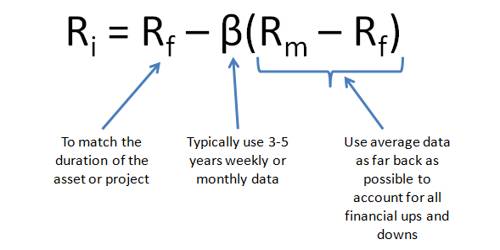The capital asset pricing model (CAPM) provides a formula that calculates the expected return on a security based on its level of risk. The formula for the capital asset pricing model is the risk-free rate plus beta times the difference of the return on the market and the risk-free rate. Arbitrage pricing theory (APT) is a well-known method of estimating the price of an asset. The theory assumes an asset’s return is dependent on various macroeconomic, market and security-specific factors.
Differentiate between Arbitrage Pricing Theory (APT) and Capital Asset Pricing Theory –
The context of differentiation is given below:
CAPM
- It means the capital asset pricing model.
- CAPM is based on an investor’s portfolio demand and equilibrium arguments.
- It is based on risk-return trade-off.
- It is difficult to find a good proxy for market return.
- It has a simple beta.
- CAPM is a single factor model.
- CAPM requires that the market portfolio be efficient.
- CAPM assumes that the probability distributes of asset returns are normally distributed.
APT
- It means arbitrage pricing theory.
- APT is based on the factors model of returns and the approximate arbitrage arguments.
- It is based on mathematical and statistical data theory.
- It is difficult to identify approximate factors.
- It has several relevant data.
- APT is a multifactor model.
- There is no special role in the market portfolio in APT.
- APT does not make any assumption about the distribution of asset returns.
These are the context of differentiation between CAPM and APT.















